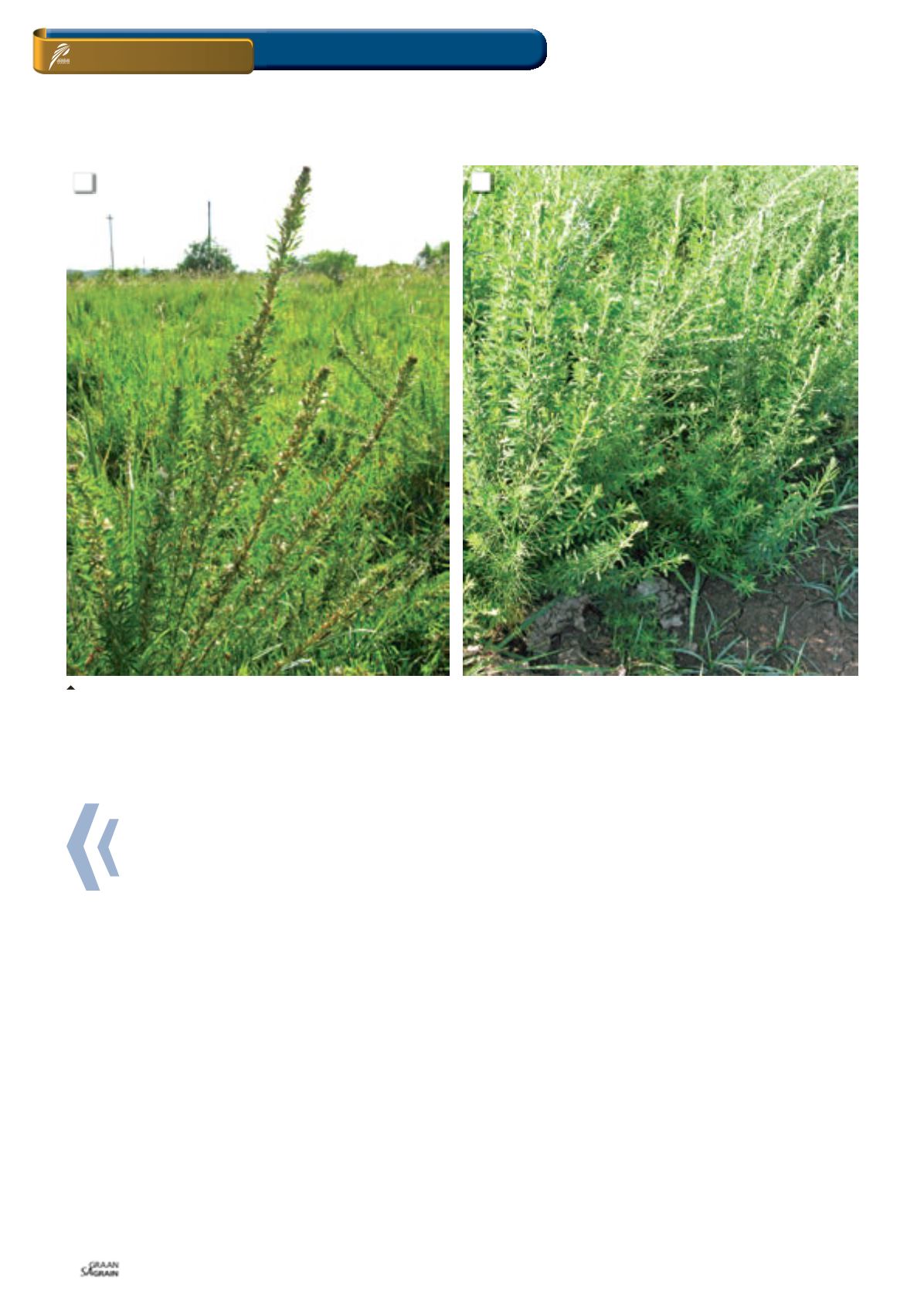

It must preferably be planted in rows 400 mm - 900 mm apart. It is
advised that the seed is planted when the soil temperature is in the
range of 25°C - 30°C, as this promotes the best germination.
The best planting time is from November until the end of January
at a maximum depth of 5 cm and never above the soil. The plant has
very low seedling vigour and is therefore advisable to be planted in
pure stands. Weed control is imperative and if weeds are controlled
well, the time from planting to first utilisation can be reduced. It is
also very important that the seed to be planted is inoculated pro-
perly as this will facilitate the valuable process of nitrogen fixation.
The excellent hay properties of Lespedeza include the fine stems
that do not contain much moisture, and new improved varieties
have a high proportion of leaf at the correct harvesting stage. These
leafy stems cure quickly and can be cut, dried and baled on the same
day if the climatic conditions allow for this. It is of utmost importance
that Lespedeza is not dried too much, as this will result in significant
leaf loss during the drying and baling process. If Lespedeza is pre-
served properly, it can be expected that 55% - 65% of leaf material
will be captured.
The Lespedeza crop can be used by either cutting it for hay or graz-
ing it. The palatability and forage intake of the high-tannin species
are higher for hay than for fresh forage with new varieties. Atten-
tion should be given that when Lespedeza is cut for hay, it should
be between 300 mm - 400 mm, because if the stems break eas-
ily when bent, the crop is too mature to make high-quality hay. To
harvest the crop at a more mature stage will provide much higher
yields, but at the expense of less leaf and lower quality. It is also
advised that 100 mm - 150 mm of stubble is left after each cutting to
ensure speedy regrowth.
Management of this species should be aimed at keeping the plant
to grow vigorously. When this crop is used for grazing it is essential
to rotationally graze the plants when they are 150 mm to 250 mm
tall. If this crop is left to grow out taller than 350 mm the chances of
having forage with high quantities of tannin are high.
Soil conservation and health benefits
As Lespedeza grows in a dense stand it has the benefit of having
a good cover and that it prevents soil erosion. Over and above its
ability to protect the soil from eroding rains in summer, it has the
added value of a legume by contributing to the nitrogen and organic
matter status of the soils, improving the soil fertility.
It has also been reported that when Lespedeza is incorporated into
the soil as a green manure crop, the succeeding crops will benefit
tremendously from it. In no-till conditions, the crop can be used as
a ley crop and killed by herbicides before establishing a cash crop
such as maize.
The well-known deep and vigorous root system of Lespedeza is the
most respected contribution to improved soil condition, especially
over the full life-cycle of the legume crop.
ON FARM LEVEL
Conservation agriculture
86
Maart 2015
CONSERVATION AGRICULTURE
1 and 2: Lespedeza (poor man’s lucerne).
1
2

















